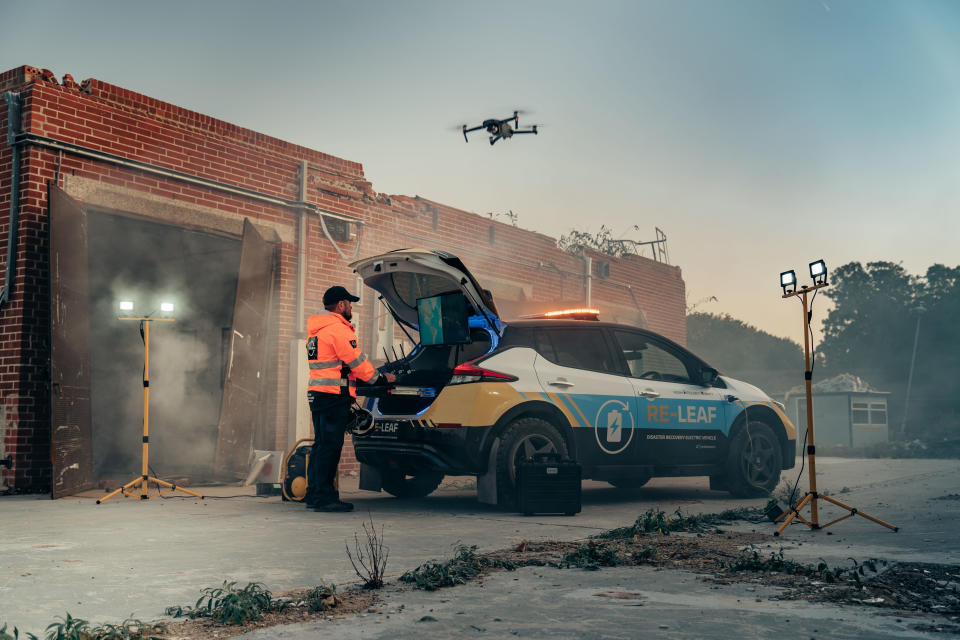Nissan reveals electric emergency response vehicle concept
Nissan has revealed an electric emergency response vehicle that has been adapted to be a mobile power supply following natural disasters and extreme weather events.
Dubbed Re-Leaf, the working prototype is based on the Leaf passenger car, but features modifications to help it navigate roads blocked by debris as well as weather-proof plug sockets to power 110- to 230-volt devices using the car’s battery.
A 2019 World Bank report showed natural shocks and climate change were responsible for 37 per cent of power outages in Europe between 2000 and 2017, as well as 44 per cent in the US during the same period.
Depending on the severity of the damage, it can take 24 to 48 hours to restore power, so mobile power supplies could be hugely beneficial to an impacted community.
Although this is just a working prototype for now, Nissan has been using the Leaf to provide emergency power and transportation after natural disasters since 2011.
The Nissan Leaf has bi-directional charging, which means charge can not only be put into the battery through the charging port, but it can also be taken out. Fully charged, the car’s 62kWh battery could charge the average UK household for six days, meaning there’s plenty of capacity to power equipment on-site.

Helen Perry, head of electric passenger cars and infrastructure for Nissan in Europe, said: “Through Nissan Intelligent Mobility, we’re constantly exploring ways that electric vehicles can enrich our lives, beyond just zero-emission transportation.
“Concepts like the Re-Leaf show the possible application of EVs in disaster management and demonstrate that smarter, cleaner technology can help save lives and provide greater resilience for the future.
“Electric vehicles are emerging as one of the technologies that can improve resilience in the power sector. By having thousands of EVs available on standby, either as disaster-support vehicles or plugged into the network through Vehicle-to-Grid (V2G), they’re uniquely capable of creating a virtual power plant to maintain a supply of energy during a major outage.”

 Yahoo News
Yahoo News 
